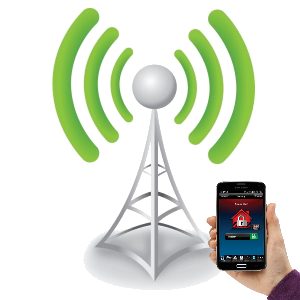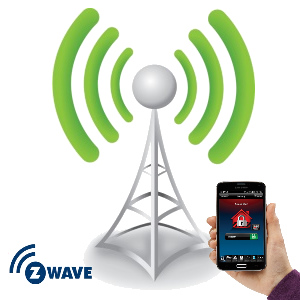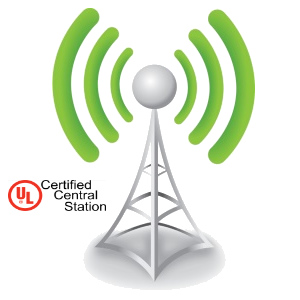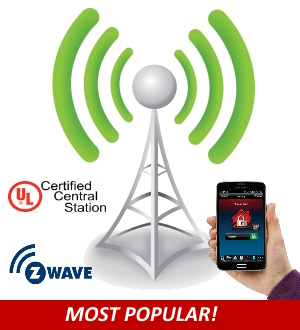How to Meet Your Insurance Company’s Requirements for a Monitored Home Alarm System
When it comes to protecting your home, your family, and your valuables, a monitored home alarm system is a smart investment—and in many cases, your insurance company agrees. Many insurers offer significant discounts if you install a professionally monitored alarm system for burglary and fire protection. But simply installing any alarm system may not be enough; your insurer may have strict requirements for certification and monitoring. So how can you ensure you meet their expectations and secure your discount? Let’s break it all down in this comprehensive guide.
Understanding Insurance Requirements for Alarm Systems
Insurance companies aren’t just being picky when they ask for a monitored alarm system—they’re managing risk. A professionally monitored system ensures that if an alarm is triggered, a central station will contact emergency services immediately, reducing potential losses from burglary or fire.
Why Insurance Companies Require Monitored Alarm Systems
At its core, insurance is about risk mitigation. When your home has a monitored alarm system, insurers know that threats like burglary and fire are less likely to cause major damage or loss. A non-monitored system—while helpful—relies on you or neighbors to respond to alarms, which can result in delays. Insurance companies prefer UL-listed central station monitoring because it provides reliable, third-party verification that authorities will be notified promptly.
Moreover, insurance companies often have minimum standards about what qualifies as a “monitored” system. It’s not enough to simply have loud sirens or a basic system with no central reporting. Most insurers require that both burglary and fire risks are monitored 24/7, and that the monitoring station is UL-certified, proving it meets rigorous standards for reliability, redundancy, and responsiveness.
Benefits of Compliance for Homeowners
Complying with your insurance company’s monitored alarm requirements doesn’t just save you money on premiums—it gives you peace of mind. A compliant system can reduce your out-of-pocket costs after a loss, improve your eligibility for discounts (which can range from 5% to 20%), and make your home a harder target for criminals.
Beyond financial savings, monitored systems often integrate with modern smart-home features, offering remote control and real-time alerts through services like Alarm.com. So, by aligning with your insurer’s requirements, you’re not just checking a box—you’re upgrading your overall home security and convenience.
The Importance of UL Central Station Monitoring
So, what exactly is “UL Central Station Monitoring” and why is it essential? UL stands for Underwriters Laboratories, an organization that tests and certifies products and services for safety and performance.
What is UL Central Station Monitoring?
UL-certified monitoring centers must meet strict operational guidelines, such as redundancy in power supply, communications, and staffing. This means that even in the event of power outages or natural disasters, a UL-listed central station like the one SafeHomeCentral.com partners with will still be online and responsive.
When your alarm triggers—whether for burglary or fire—the UL central station receives the signal, verifies the emergency, and contacts the appropriate emergency services in your area. UL certification is a key requirement for many insurers because it assures a high standard of reliability, critical for preventing catastrophic loss.
Why UL Certification Matters to Insurers
For your insurer, it’s all about confidence: a UL-listed central station means that your monitoring service has passed rigorous, ongoing inspections to ensure its performance and reliability. It reduces the risk that an alarm signal won’t get through due to equipment failure or human error.
Additionally, UL certification typically makes it easier and faster to obtain the insurance documentation you’ll need—a monitoring certificate proving your home is actively protected by a UL-compliant service.
Choosing the Right Monitoring Service Provider
Not all monitoring services are created equal. Some providers lock you into long-term contracts, charge inflated monthly fees, or take days to issue the certificates your insurance company requires.
Why SafeHomeCentral.com is a Top Choice
SafeHomeCentral.com stands out as a leading option for homeowners who want affordable, flexible, and reliable alarm monitoring. They specialize in no-contract Alarm.com monitoring—meaning you can get started without a lengthy commitment—and offer fast service so you can secure your insurance discount quickly.
Their pricing is among the best in the market, and they understand what insurance companies require. They automatically supply every customer who activates service with a UL central station monitoring certificate the same day they go online. That’s a major benefit if you’re trying to provide proof of coverage quickly to your insurer.
Advantages of No-Contract Alarm.com Monitoring
With SafeHomeCentral.com’s no-contract plans, you retain flexibility and control over your service. No expensive early termination fees or long-term obligations. Plus, their Alarm.com platform integrates seamlessly with popular DIY alarm systems, providing real-time alerts, remote control, and system management through a mobile app.
This combination of affordability, flexibility, and insurance-friendly certification makes SafeHomeCentral.com an easy choice for homeowners who want to meet insurance requirements without unnecessary hassle.
Recommended DIY Wireless Alarm Systems
If you want to meet your insurance company’s requirements and avoid costly professional installation, a DIY wireless alarm system is the perfect solution. Two top brands stand out in this space: 2GIG and Qolsys.
Overview of 2GIG Edge System
The 2GIG Edge is a modern, intuitive alarm panel designed for easy DIY installation. It supports a wide range of wireless sensors, including door/window contacts and smoke detectors—essential for insurance compliance. The Edge panel features facial recognition for disarming, built-in glass break detection, and seamless integration with Alarm.com.
The wireless design means you won’t need to run wires through your walls, and setup can often be completed in a single afternoon. The system is available through various online retailers—including Amazon—allowing you to shop around for the best pricing.
Overview of Qolsys IQ4 Hub System
The Qolsys IQ4 Hub is another excellent option. It offers similar wireless convenience and integration with Alarm.com. The IQ4 Hub’s sleek touchscreen interface, built-in camera, and smart home automation compatibility make it a favorite among tech-savvy homeowners.
This system also supports encrypted wireless sensors for enhanced security and reliability, helping ensure that your system meets insurer expectations for performance and reliability.











